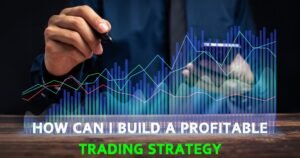Trading can be an exhilarating endeavor, filled with the promise of financial freedom. However, diving into the world of trading without a solid strategy is like setting sail without a map. You might find yourself lost in unpredictable waters, battling storms that could have been avoided. Crafting a profitable trading strategy is essential for navigating these challenges and making informed decisions.
Whether you’re looking to trade stocks, forex, or cryptocurrencies, having a well-defined approach can make all the difference. The right strategy not only enhances your chances of success but also helps manage risks effectively. So how do you build this elusive profitable trading strategy? Let’s embark on this journey together as we explore key components that will set you up for success in the dynamic world of trading!
Understanding Risk Management in Trading
These automatically close a trade when it hits a predetermined price, limiting potential losses. Position sizing also plays an essential role. Determining how much money to allocate per trade can prevent significant drawdowns in your account balance.
Diversification can help mitigate risk as well. By spreading investments across various assets or sectors, you reduce the impact of any single loss on your overall portfolio.
Maintaining emotional discipline is vital. Fear and greed can lead to impulsive decisions that derail even the best-planned strategies. Stick to your plan and let data guide your choices rather than emotions.
Analyzing Market Trends and Indicators
Analyzing market trends and indicators is crucial for building a profitable trading strategy. Trends reveal the direction of the market, helping traders identify potential opportunities.
Start by examining price charts to spot patterns. Moving averages can smooth out noise, giving you a clearer picture of where prices are headed. Look for crossovers between short-term and long-term averages; they often signal shifts in momentum.
Indicators such as Relative Strength Index (RSI) or MACD provide insights into whether an asset is overbought or oversold. These tools help you gauge market sentiment, allowing for informed entry and exit points.
Don’t overlook volume analysis either. High trading volumes often accompany significant price movements, indicating stronger conviction behind those moves.
Incorporating these elements creates a robust framework that boosts your chances of success in trading while minimizing risks associated with impulsive decisions.
Choosing a Trading Style: Day Trading vs Swing Trading
When it comes to trading, choosing the right style can significantly impact your success. Day trading and swing trading are two popular approaches, each with its own benefits.
They thrive on volatility, aiming for quick profits from small price movements. This method requires constant monitoring of charts and fast decision-making, making it suited for those who enjoy high energy environments.
On the other hand, swing trading involves holding positions over several days or weeks. It focuses on capturing larger price shifts by analyzing market trends over time. Swing traders usually have a more relaxed schedule compared to their day-trading counterparts but must remain disciplined in managing trades.
Your choice largely depends on your lifestyle and risk tolerance. Consider how much time you can dedicate daily and whether you prefer fast-paced action or longer-term strategies before diving into either method.
Implementing Your Strategy: Backtesting and Paper Trading
Implementing your trading strategy is crucial to its success. This involves applying your strategy to historical data to see how it would have performed in past market conditions. By analyzing these results, you can identify strengths and weaknesses.
Next comes paper trading. This allows you to simulate live trading without risking real money. Use a demo account or virtual platforms that mimic actual market environments. It’s an excellent way for traders to test their strategies in real-time scenarios.
Both methods provide invaluable insights into potential adjustments needed in your approach. They allow you the freedom to experiment and refine before making financial commitments.
As you gather data from both practices, keep detailed records of your trades and outcomes. Continuous learning will help shape a more resilient trading strategy over time.
Common Mistakes to Avoid in Building a Trading Strategy
Many traders stumble when they overlook the importance of a well-defined plan. Jumping into trades without clear goals can lead to impulsive decisions and unnecessary losses.
Another common pitfall is neglecting risk management. Failing to set stop-loss orders or position sizing correctly exposes you to greater losses than anticipated.
Overtrading also poses a significant threat. Getting caught up in market volatility can result in hasty trades that don’t align with your strategy, draining both your capital and confidence.
Emotional trading frequently derails many aspiring traders. Allowing fear or greed to dictate actions often leads away from rational decision-making.
Ignoring the need for regular evaluation means missing out on potential improvements. Continuous assessment of your strategy helps identify weaknesses and adapt effectively as markets change.
Conclusion: Staying Consistent and Adapting to Market Changes
Building a profitable trading strategy requires patience and adaptability. The markets are constantly changing, influenced by economic indicators, geopolitical events, and trader sentiment. This means that what works today may not necessarily work tomorrow.
Staying consistent is crucial. Develop your strategy based on thorough research and stick to it even when emotions run high. Discipline can often be the difference between success and failure in trading.
However, don’t forget the importance of flexibility. Regularly review your performance and adjust your approach as needed. Embrace continuous learning—keeping up with market trends can provide invaluable insights that enhance your strategy over time.
Remember, every trader experiences losses along the journey; it’s how you respond to those setbacks that will ultimately define your success in building a profitable trading strategy.

